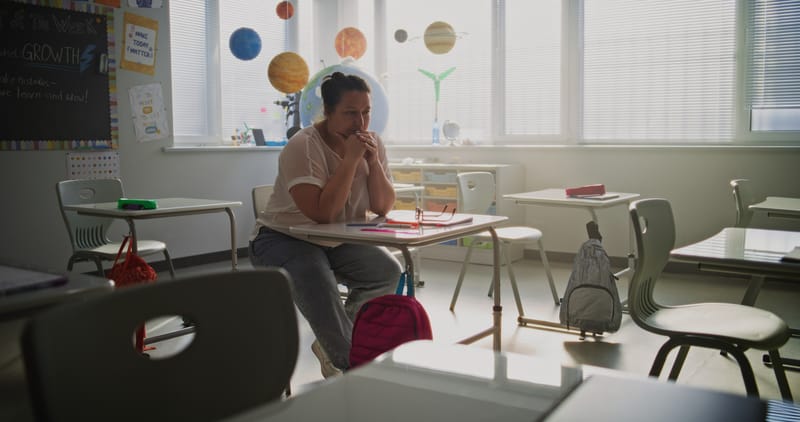
Since 2008, NAPLAN improvements have focused on how and when it’s rolled out, and how the results are publicly reported, but it still continues to draw criticism for its narrow scope and negative impact on students.
In February, Australia’s education ministers announced further changes for NAPLAN 2023, including introducing earlier testing in March, and improved reporting methods.
Given this, it’s worth taking a closer look at what precisely is on offer as more than one million students across years 3, 5, 7 and 9 prepare to sit the tests.
More than 1.3 million Australian students will have their reading, writing and maths skills assessed when they sit NAPLAN tests this week, with the results to be delivered to parents and schools months earlier than in previous years. https://t.co/4075kMDdch— The Age (@theage) March 13, 2023
The funding model
The Australian government is committed to providing recurrent funding for every school-enrolled student, with projections that from 2018 to 2029 this will amount to $323.9 billion.
For 2022-23, the Australian government aims to provide $26.4 billion to states and territories to support school education under its Quality Schools arrangements, with $10.3 billion provided to government schools, and $16.1 billion to non-government schools.
The new, less complex and more transparent version of NAPLAN reporting will provide a clear indicator of this return on investment as a system-level tool.
Perceived benefits and problems for Australian schools
The Australian Curriculum, Assessment and Reporting Authority (ACARA) claims NAPLAN 2023 will assist teachers in providing targeted learning support sooner in any given year, including challenging high-performers and identifying students who need support.
This suggests that NAPLAN has a diagnostic ability that can be harnessed for students and schools. At the school level, the test assists schools in mapping individual student progress, identifying strengths and weaknesses in teaching programs and setting school goals for further improvement in literacy and numeracy.
However, testing in March, with results released in July, in effect leaves less time for teachers to analyse the data and make use of it, or for schools to make educational improvements in that year. Indeed, a research study conducted in 2022 found teachers make limited or no use of NAPLAN.

Developing data literacy among school teachers, and using an Assessment for Learning and Assessment as Learning culture needs to be further developed across Australian schools.
Hence, rather than having the test still carried out on schools and students, the proactive stance of doing the test with schools and assisting them in developing their assessment capability is needed.
This capability needs to be developed at school level so that when NAPLAN results are published in July, schools can exploit term-three conversations with students, parents and teachers, where these diagnostic results are discussed in tandem with semester one reports, thereby providing parents and students with a clearer learning map for 2023 that uses an Assessment for Learning and Assessment as Learning approach over the traditional Assessment of Learning approach.
Furthermore, by bringing NAPLAN testing times forward, extensive teaching to the test methods are avoided or reduced. Students will be tested on four levels of achievement – exceeding, strong, developing, and needs additional support.
However, it doesn’t consider that students have had a significant break over the summer holidays, and that this may have negative, punitive ramifications regarding test readiness for some students.
For students already suffering multiple learning and social disadvantages, this timing and the subsequent results could potentially add to low self-esteem.
The release of the results, one term later in July 2023, also means that although the tests are carried out online and earlier, the biggest disadvantage for the student and their parents remains unaddressed.
Further, by the time tests are administered in mid-March, most schools, student placement and diagnostic tests have already been completed. Releasing test results in July means that half the year of student learning is over, making it challenging for schools to expedite access to necessary learning programs that assist students immediately.

By holding NAPLAN closer to the end of the year, with results published before the year’s end, would allow all students to be introduced to substantial curricular content over that year, and be able to better-demonstrate their level of proficiency at that level.
Next, correlating NAPLAN results with school semester two reports would provide their next year-level teachers with enough diagnostic data to be able to begin work on tailoring learning programs for the start of the next school year.
The summer break would allow schools to ascertain the kinds of remedial work required by students, as well as assist them in setting up individual learning plans for students who need extra support. Better-informed parents would also be able to support their children over the summer in improving any learning areas identified, while partnering proactively with their schools.
This approach could also lay the groundwork for schools to set up specialised summer schools (as trialled in the US to deal with COVID learning loss) for students, giving them a greater opportunity for success by working on realistic learning goals over summer.
The accrued national benefits of this high-stakes test lays grounds for it being around for a long time. By developing better perceptions regarding the scope and practices associated with the test, as well as its timing, we’ll be able to harness an Assessment for Learning and Assessment as Learning approach within Australian schools.





